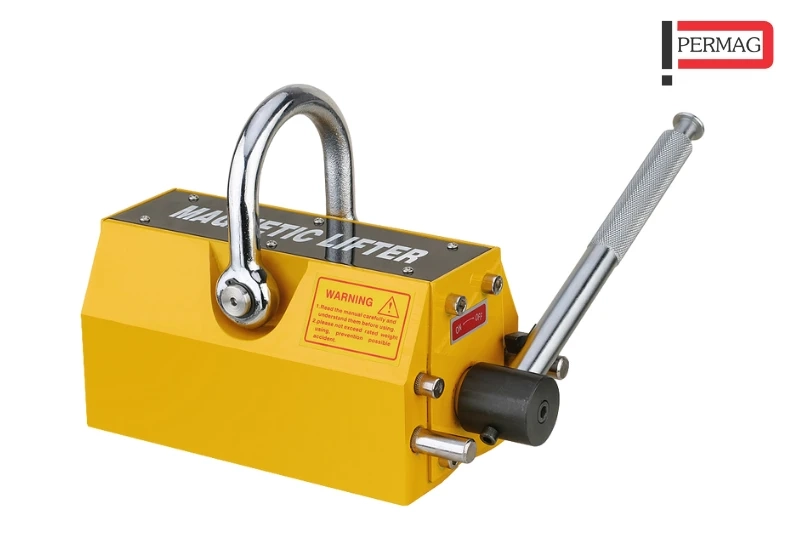Magnet testing is a crucial process in various industries to ensure the quality and performance of magnets used in different applications. Magnets are widely used in industries such as automotive, aerospace, electronics, energy, and manufacturing for a wide range of applications, including motors, generators, sensors, speakers, and magnetic separators. Magnet testing methods are employed to evaluate the magnetic properties, strength, and integrity of magnets, and to detect any defects or anomalies that could affect their performance. In this blog, we will explore different methods of magnet testing and their effectiveness in ensuring the quality and reliability of magnets.
Magnet Audit: A Comprehensive Approach to Magnet TestingA magnet audit is a comprehensive approach to magnet testing that involves a thorough inspection and evaluation of magnets to assess their quality, performance, and compliance with industry standards. A magnet audit typically includes the following steps:
1.1 Visual Inspection: Visual inspection is the first step in a magnet audit, where the magnet is visually examined for any visible defects such as cracks, chips, or surface irregularities that could affect its performance.
1.2 Dimensional Inspection: Dimensional inspection involves measuring the physical dimensions of the magnet, such as its length, width, and thickness, to ensure that it meets the required specifications.
1.3 Magnetization and Demagnetization Testing: Magnetization and demagnetization testing is performed to evaluate the magnetic properties of the magnet, including its magnetic field strength, magnetic flux density, and magnetic polarity. This testing is typically done using specialized magnetization and demagnetization equipment, and the results are compared against the required specifications.
1.4 Magnetic Field Mapping: Magnetic field mapping is performed to evaluate the uniformity and strength of the magnetic field across the surface of the magnet. This testing is typically done using magnetic field mapping equipment, such as gaussmeters or magnetic field scanners, to measure the magnetic field strength at various points on the magnet's surface. The results are analyzed to ensure that the magnetic field is within the required specifications and uniform across the entire surface of the magnet.
1.5 Pull Force Testing: Pull force testing, also known as magnet strength testing, is performed to measure the force required to pull a magnet away from a ferromagnetic surface. This testing is typically done using a pull force tester, and the results are compared against the required specifications to ensure that the magnet has the required strength for its intended application.
1.6 Temperature Testing: Temperature testing is performed to evaluate the performance of magnets under different temperature conditions. Magnets can lose their magnetic properties at high temperatures, so temperature testing is important to ensure that magnets can perform reliably under the expected operating temperatures.
1.7 Coating Inspection: Coating inspection is performed to evaluate the integrity of any coatings or platings on the magnet's surface. Coatings are often applied to magnets to protect them from corrosion, wear, and other environmental factors that could affect their performance. Coating inspection typically involves visual inspection, adhesion testing, and thickness measurement of the coating.
1.8 Documentation Review: Documentation review involves reviewing the manufacturing and testing records of the magnet, including material certificates, production reports, and test reports, to ensure that the magnet has been manufactured and tested according to the required specifications and industry standards.
The effectiveness of a magnet audit depends on the thoroughness of the inspection and the accuracy of the testing methods used. A comprehensive magnet audit can provide a reliable assessment of the quality, performance, and compliance of a magnet with industry standards, ensuring its reliability and suitability for the intended application.
Magnet Inspection: Non-Destructive Testing MethodsMagnet inspection methods are used to detect defects or anomalies in magnets without damaging or altering their properties. Non-destructive testing (NDT) methods are commonly used for magnet inspection and include the following techniques:
2.1 Magnetic Particle - Inspection (MPI): Magnetic Particle Inspection (MPI) is a widely used NDT method for detecting surface and near-surface defects in ferromagnetic materials, including magnets. In MPI, the magnet is magnetized, and iron particles coated with a contrasting dye are applied to the surface of the magnet. The particles will accumulate at the areas where there are defects or surface irregularities, creating visible indications that can be detected and interpreted by a trained inspector. MPI is effective in detecting cracks, chips, and other surface defects in magnets, and it can be used for both manual and automated inspection processes.
2.2 Eddy Current Testing (ECT): Eddy Current Testing (ECT) is another NDT method used for magnet inspection. In ECT, a coil carrying an alternating current is placed near the surface of the magnet, creating eddy currents in the magnet. Changes in the eddy currents caused by defects or anomalies in the magnet's properties will generate electromagnetic signals that can be detected and analyzed. ECT is effective in detecting defects such as cracks, voids, and inclusions in magnets, and it can be used for both surface and subsurface inspection.
2.3 Ultrasonic Testing (UT): Ultrasonic Testing (UT) is a widely used NDT method for detecting internal defects in materials, including magnets. In UT, high-frequency sound waves are transmitted into the magnet, and the reflected waves are analyzed to detect changes in the material properties that could indicate the presence of defects or anomalies. UT is effective in detecting internal defects such as voids, inclusions, and delaminations in magnets, and it can be used for both manual and automated inspection processes.
2.4 Remote Visual Inspection (RVI): Remote Visual Inspection (RVI) involves the use of specialized equipment, such as borescopes or cameras, to visually inspect the internal and hard-to-reach areas of magnets without the need for disassembly. RVI is effective in detecting surface defects, cracks, and other anomalies in magnets that may not be easily visible from the outside. RVI is often used in combination with other NDT methods to provide a comprehensive inspection of magnets.
Magnet Testing: Destructive Testing MethodsDestructive testing methods involve the alteration or destruction of the magnet in order to evaluate its properties and performance. Destructive testing methods are typically used for in-depth analysis or for testing magnets that are no longer in service or are being evaluated for failure analysis. Some of the destructive testing methods used for magnet testing include:
3.1 Microstructure Analysis: Microstructure analysis involves the examination of the internal structure of the magnet at a microscopic level. This can be done by taking a small sample of the magnet and preparing it for microscopic examination using techniques such as metallography or electron microscopy. Microstructure analysis can provide information about the crystal structure, grain size, and other microstructural characteristics of the magnet, which can be used to assess its quality, performance, and potential defects.
3.2 Chemical Analysis: Chemical analysis involves the determination of the chemical composition of the magnet. This can be done by taking a small sample of the magnet and analyzing it using techniques such as spectroscopy or chromatography. Chemical analysis can provide information about the elemental composition, impurities, and alloying elements of the magnet, which can be used to assess its quality, performance, and potential defects.
3.3 Mechanical Testing: Mechanical testing involves the evaluation of the mechanical properties of the magnet, such as its hardness, tensile strength, and impact resistance. This can be done by taking a small sample of the magnet and subjecting it to mechanical tests, such as tensile testing, hardness testing, or impact testing. Mechanical testing can provide information about the mechanical strength, toughness, and durability of the magnet, which can be used to assess its suitability for the intended application and potential defects.
3.4 Thermal Analysis: Thermal analysis involves the evaluation of the magnet's response to temperature changes. This can be done by subjecting the magnet to controlled heating or cooling cycles and measuring its thermal properties, such as coefficient of thermal expansion or Curie temperature. Thermal analysis can provide information about the magnet's thermal stability, performance under different temperature conditions, and potential defects related to thermal stress.
3.5 Magnetic Property Testing: Magnetic property testing involves the measurement of the magnet's magnetic properties, such as magnetic field strength, magnetic flux density, and magnetic hysteresis. This can be done using various techniques, such as magnetometers or hysteresis analyzers. Magnetic property testing can provide information about the magnet's magnetic performance, consistency, and potential defects related to magnetic properties.
Effectiveness of Magnet Testing MethodsThe effectiveness of magnet testing methods depends on various factors, including the type of magnet, the type and size of defects or anomalies being targeted, and the specific application requirements. Each method has its advantages and limitations, and a combination of different methods may be used to achieve a comprehensive inspection of magnets.
Non-destructive testing methods, such as MPI, ECT, UT, and RVI, are generally preferred for routine magnet inspection as they do not alter or damage the magnet and can provide reliable results without compromising its integrity. These methods are effective in detecting surface and near-surface defects and can be used for both manual and automated inspection processes. They are also relatively fast, cost-effective, and non-intrusive, making them suitable for regular maintenance and quality control purposes.
On the other hand, destructive testing methods, such as microstructure analysis, chemical analysis, mechanical testing, thermal analysis, and magnetic property testing, are typically used for in-depth analysis or for evaluating magnets that are no longer in service or are being evaluated for failure analysis. These methods may involve sample preparation, alteration, or destruction of the magnet, and may not be suitable for routine inspection or quality control purposes. However, destructive testing methods can provide more detailed information about the magnet's properties, performance, and potential defects, and can be valuable in diagnosing specific issues or conducting in-depth investigations.
In summary, the effectiveness of magnet testing methods depends on the specific requirements of the inspection, the type of magnet, and the size and type of defects being targeted. Non-destructive testing methods are generally preferred for routine inspection purposes, while destructive testing methods may be used for in-depth analysis or specific investigations. A combination of different methods may be employed to achieve a comprehensive inspection of magnets and ensure their quality, performance, and reliability.
Conclusion
Magnetic particle inspection (MPI), eddy current testing (ECT), ultrasonic testing (UT), remote visual inspection (RVI), microstructure analysis, chemical analysis, mechanical testing, thermal analysis, and magnetic property testing are some of the commonly used methods for magnet testing. Each method has its advantages and limitations, and the selection of an appropriate method depends on the specific requirements of the inspection, the type of magnet, and the size and type of defects being targeted.
Non-destructive testing methods, such as MPI, ECT, UT, and RVI, are generally preferred for routine magnet inspection as they do not alter or damage the magnet and can provide reliable results without compromising its integrity. These methods are effective in detecting surface and near-surface defects and can be used for both manual and automated inspection processes. Destructive testing methods, such as microstructure analysis, chemical analysis, mechanical testing, thermal analysis, and magnetic property testing, may be used for in-depth analysis or specific investigations, but they may involve sample preparation, alteration, or destruction of the magnet and may not be suitable for routine
PERMAG is a leading supplier of magnetic grill, and we are committed to providing our customers with the highest quality products available on the market. Thanks to our state-of-the-art manufacturing process, we are able to produce magnetic rods that meet the most stringent quality standard.


